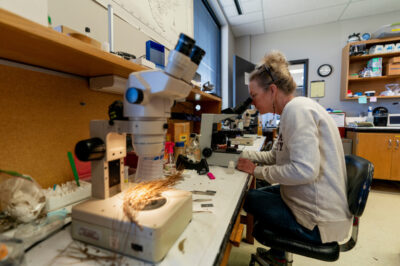Search results for: “homeowners guide to pests of peaches plums and pecans”
- ProgramThe Plant Pathology and Microbiology (PLPM) Extension program provides applicable and essential services through subject-matter experts of plant health management, plant diseases, plant-microbe interactions and the environmental sciences. Specialists are...

- PublicationThis Excel file has several spreadsheets that are designed to provide tools to aid in determining application rates and costs for herbicides, insecticides, and adjuvants (surfactants) commonly used in the...
- PublicationThese directions correspond with the Excel spreadsheet titled "Herbicide and Insecticide Cost Per Acre Spreadsheet" (ANSC-PU-430). The Excel file has several spreadsheets that are designed to provide tools to aid...
- PublicationIntegrated pest management (IPM) aims to prevent pest problems through all available control tactics: cultural, mechanical or physical, biological, and chemical control. This factsheet discusses methods for each of the...
- PublicationAlthough algae do not infect turfgrass directly, they are highly invasive and out-compete grasses for space and nutrients. Algal scum can be a chronic problem, especially on turf with poor...
- PublicationThe visible symptoms of anthracnose on turf are variable. Typically, it is recognized by damaged turf in a pattern of dots, circles, or irregularly shaped patches-ranging in size from several...
- PublicationDollar spot occurs from late spring through fall and is most active during warm and humid days (70 to 85 degrees F) and cool nights (60 degrees F), which leads...
- PublicationWhile downy mildew is a frequent issue in warm-season turfgrasses, the symptoms and effects can vary greatly between grass species, as is the case with St. Augustine grass and zoysia...
- PublicationThe tomato spotted wilt virus (TSWV) has remained an economically important plant disease-causing pathogen for decades, which is a virus widespread in the U.S. TSWV is distributed globally in almost...
- PublicationTexas produces approximately 12.4 percent of peanuts in the United States. A newly identified disease affecting peanuts, BEDD, can cause poor stand establishment and seedling vigor, poorly developed root systems,...
